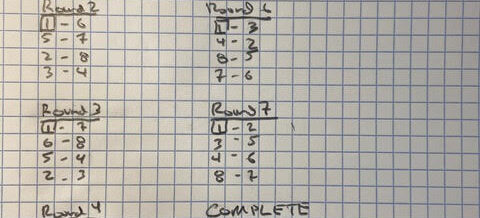
The date, November 9, 2016 – one day after the 2016 presidential election. Needless to say, political pundits were not the only ones surprised by the election results. When I entered my classroom that day there was a palpable “something” in the air. It was clear my students were not in a space to conduct classroom work as usual. In truth, I wasn’t either.
At that moment, I wanted my students to understand that they were part of a learning community, and no matter their political affiliations, should be willing and able to support each other’s learning and, frankly, to show care toward one another as Denisonians. What seemed important was to create a space for students both to name what they were feeling and to acknowledge each other as genuine people. In this way, I’ve learned a lot from my colleagues Drs. Laura Russell and Sharon Chuang, and the thinking they’ve done about appreciative inquiry. Such inquiry doesn’t settle for mere “niceness.” Instead, appreciative inquiry takes as one starting point genuine curiosity and a corresponding humility. And a second starting point may be this: Such inquiry depends on having the courage to say what most moves us, even when saying–and hearing–such things feels scary.
To see this in action, everyone stood and formed a rough two-person line facing one another. I then had each student share with the person across from them one word that best captured what they were feeling at that moment. The person to whom they spoke that word repeated the word. We then rotated, so that everyone shared a word with everyone else in the room, and everyone repeated back each word they had heard. To debrief, I invited students to share what they noticed during the exercise. Some said it felt “weird” at first, but then became strangely moving; others highlighted the frequency of similar words and what these may have suggested for a sense of shared feeling in the room. After that initial exchange, we repeated the two-person line with each student telling the other something they appreciated or acknowledged about the person across from them. The recipient of each compliment or acknowledgement responded only with “Thank you.” I participated in both exercises too.
While the pairing process was messy and students had to help direct traffic (prompting much-needed laughter and providing me the chance to express gratitude, as spatial problem-solving is not my thing!), everyone appreciated the opportunity to talk with–and listen to–one another and “ lower the temperature in the room,” as one student put it. I could have put my head down that day and covered the planned material, but I knew–really, felt–that was not what my students needed. They needed a space to listen and connect, really connect, with each other.
I do not know what 11/04/2020 will look like. I suspect students’ minds will be in many different places and they’ll feel a whole range of feelings. Simple exercises like these help us connect with and support our students. And they show how they can do the same for each other.

Jeff Kurtz
Professor
Communication
